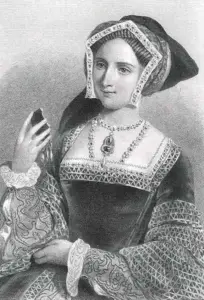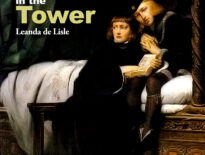The Victorians were a lavishly sentimental bunch. They loved the extremity of emotion and they had none of our cultural hang-ups about projecting their standards onto the study of history. Indeed, quite the opposite: in Victoria's Britain, the nation's sense of their country's superiority was as lively as it was unshakeable. James Anthony Froude, in his sober histories of sixteenth-century England, saw Henry VIII as one of the founding fathers of the British Empire, exonerating men like Cromwell, Norfolk and Suffolk from complicity in Anne Boleyn's judicial murder, because they had been like the Nelson and Wellingtons of the sixteenth century and they therefore could not have been party to such a horrid plot. Meanwhile, writers like Jane Austen, Charles Dickens and Agnes Strickland did not hesitate to lambast Henry as 'a regal ruffian', a depraved and horrible creature who had been utterly devoid of the qualities that would have made him the thing which Victorian readers and writers alike held in highest regard - a gentleman.
In their love of the grand moments of historical drama, the Victorians ransacked the pantheon of the past for heroes, villains, ladies and lotharios. Marie-Antoinette, vilified in left-wing histories which sought to lift the French Revolution's historical reputation from the gutter where it had lain ever since it ended in such bloody and ignominious failure in 1794, was placed in a sentimental spotlight by the right-wing and she soon took on a cultural reincarnation that saw magazine sketches of her stuck on the walls of little girls' bedrooms across Western Europe. Her quasi-secular and sentimental cult gathered momentum until the First World War, when the world was inundated with new sorrows and the Romanov princesses rose to replace her in the collective memory of butchered innocents. Before then, the Tsarina Alexandra had a large portrait of her above her desk in Saint Petersburg, two female Oxford professors claimed to have seen her ghost in the gardens at Versailles and anyone who has read Frances Hodgson Burnett's A Little Princess might recall how Sara fortifies herself from her cruel classroom bullies by imagining that they are the uncouth, murderous revolutionaries and she is the beautiful, maligned and dignified Marie-Antoinette.

The Tudors offered up even more inspiration for the Victorians. Jane Austen thought Elizabeth I was awful and Queen Victoria was much keener on emphasising her descent from Mary, Queen of Scots, whom she idolised, than her role as Elizabeth I's eventual successor, since she saw Elizabeth as a cold and unfeeling tyrant for failing to embrace married life, a role which Victoria famously took to with near-unhinged vigour. In a similar vein to Marie-Antoinette, Anne Boleyn and Catherine Howard were bathed in the warm light of Victorian sentimentality. This fascination had important outcomes, too. In order to appease the Queen's obsession with her tragic forebears, the Tower of London yeomen fixed upon the Tower Green as the site of the scaffold where Anne Boleyn, Margaret Pole, Catherine Howard and Jane Grey had met their deaths, because the Queen wanted to see where it was and no-one was exactly sure. The modern yeomen repeat that the queens died where the memorial to them now stands. Victoria also paid for the markers on Anne and Catherine's graves during the renovation of the chapel of St. Peter-ad-Vincula. Prior to that, the two queens had no earthly tombstones.
But by far and away, the lion's share of Victorian attention was poured onto Mary, Queen of Scots and Lady Jane Grey. Like Marie-Antoinette, they were often seen as too pure, too passionate, too lovely and too gentle for the ugly and pernicious world of dishonourable politics. Mary's multiple marriages and tragic end were re-written to suggest perfectly natural feminine frailty, with her only fault being that she fell victim to brutes unworthy of the name of men. Jane, whose posthumous fame has no greater memorial than Paul Delaroche's iconic painting of her execution in which she, the virgin-martyr, achieves an apotheosis of vulnerable loveliness, was depicted in literally thousands of popular sketches, magazine articles, novels, serial stories and plays. Her terrible death caught the imagination, while her youth meant that she could easily be divorced from the more contentious political topics raised by Mary I or Elizabeth I. She confirmed Victorian views of women; she did not challenge them.
Jane's role as posthumous celebrity in popular culture had more negative consequences, too. Victorian Britain's obsession with her reached such a commercially profitable stage that a talented writer called Richard Patrick Boyle Davey penned an account of Jane's short reign, claiming he had uncovered documents in the archives of Genoa in Italy that had had been written by a merchant who lived in London throughout 1553, called Spinola. Desperate to make his biography stand out, Davey resorted to forging the evidence and "Spinola's" account of Jane's physical appearance and key moments in her life were repeated in every biography until the 21st century when Leanda de Lisle's research proved them to be utterly false.
Those sketches that we have all seen of the Tudor royals and, in many cases, the stereotypes we and our culture continue to carry about them, in one form or another, were birthed not by sixteenth-century reality but by the nineteenth century's exploding publishing industry, cheaper books, growing literacy, muscular sense of cultural self-confidence in a seemingly unassailable empire, and a public fascinated by stories of virtue, venom and a family that we remain captivated by to this day.
Gareth Russell



Leave a Reply